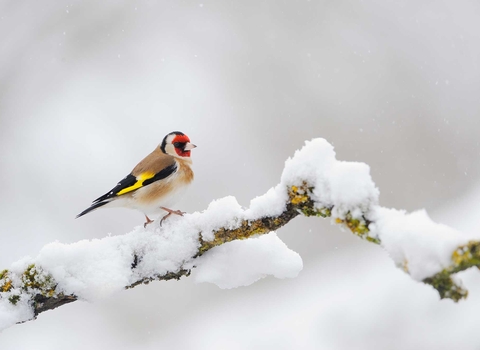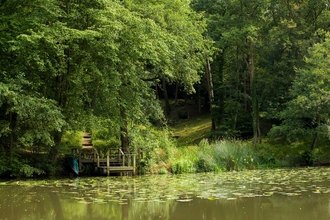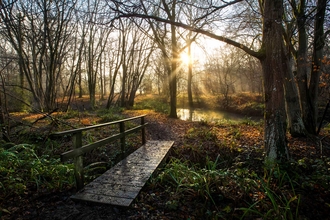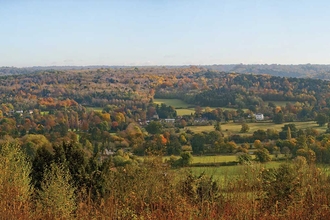The hidden life of winter woods
Winter woodlands can be a magical place. The low winter sun casts long shadows and the golden light is cut by stark bare trees. However the woods are far from silent and signs of the season to come can be found if you look closely.
Hibernating bugs and insects will be hidden away under log piles and leaf-litter or inside the hollow stems of dead plants and seedcases. The green shoots of snowdrops may be peaking out of the ground in sheltered spots, whilst bare trees may be crowned with mistletoe or indispersed with vibrant green holly bushes with bright red berries.
You might hear the drumming of woodpeckers during the day or hoot of tawny owls at night, and glistening clumps of frogspawn may also already be floating in woodland ponds and pools.
© Steve Davis
Hooting tawny owls
Along with woodpeckers, tawny owls begin their courtship displays in winter! However, tawny owls are at their noisiest from December. Listen out for the famous 'twit-twoo' call, actually made up of a 'ke-wick' sound from a female and an answering 'hoo-hoo-ooo' from a male.
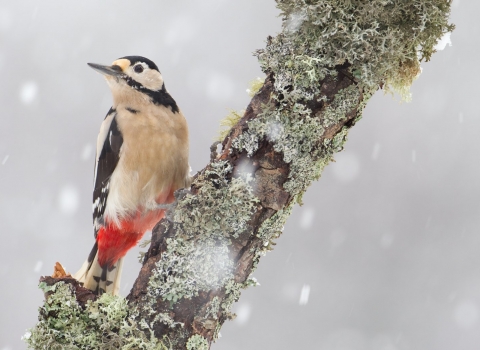
© Peter Cairns/2020VISION
Hammering woodpeckers
Great spotted woodpeckers begin their courtship in winter and begin drumming in January and February. They have a distinctive, bouncing flight, but are mostly likely to be heard, rather than seen, as they 'drum' away at a tree trunk during their breeding displays.
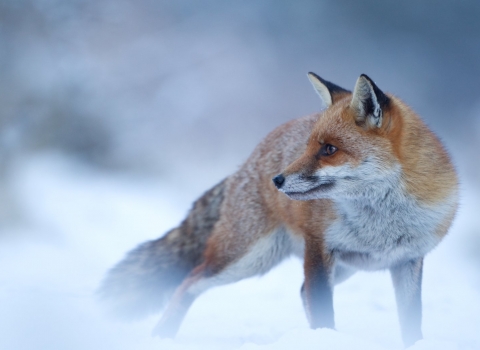
© Danny Green/2020VISION
Howling foxes
Winter is the best time to listen out for foxes as their mating period takes place this season. Described as sounding like a ‘howl’ or ‘scream', you are likely to hear them in wooded areas.
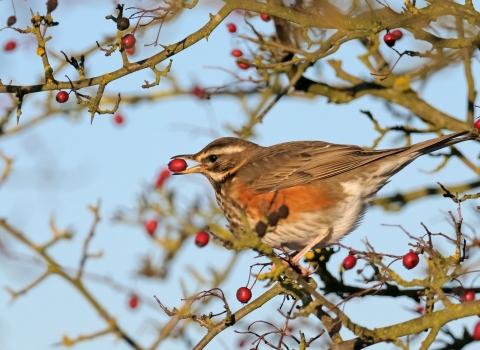
© Chris Gomersall/2020VISION
Feeding birds
Look out for large flocks of redwing and finches feeding on seeds and berries in the tops of trees, as well as groups of mixed tits. Birds outside the tit family such as goldcrests, tree creepers and chaffinches can often be seen with these feeding flocks.
Many birds flock together for safety and warmth in winter and the extra pairs of eyes also improve the chance of finding food.
Winter colour
Look out for a splash of evergreen colour in winter woodlands. Plants like holly, ivy and mistletoe provide food and shelter for wildlife during this hard time of year.
Holly
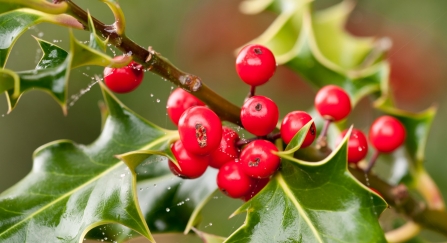
© Ross Hoddinott/2020VISION
A splash of life in the bleak depths of winter, holly is one of our most distinctive winter plants. Holly has a long-standing association with Christmas, but is also an important source of food and shelter for wildlife during the harsh winter months. Did you know that only female plants produce berries and need a nearby male to pollinate them?
Winter birds such as finches, dunnocks, goldcrests robins and thrushes use holly’s dense foliage and sharp prickles as a protective shelter, whilst the female bush's berries provide an essential food source for many bird species during winter. Small mammals such as hedgehogs, as well as toads and slow worms may use the deep leaf litter produced to hibernate.
Mistletoe
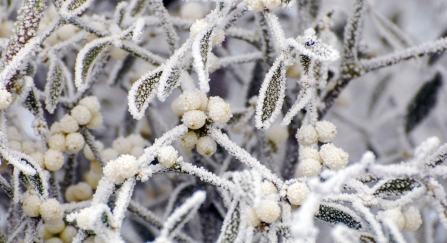
© Zsuzsanna Bird
Mistletoe has a long-standing festive connection, from pagan times when it was believed to sacred, often connected to love and fertility – hence the link to Christmas kisses. A splash of green that appeared to float in lifeless winter trees, it’s easy to see how people once thought mistletoe was magical, yet the true story of this mysterious plant is far more enchanting.
An evergreen semi-parasitic plant, mistletoe takes nutrients and sugars from its host tree through adapted roots - it especially likes apple, lime, ash and hawthorn trees - as well as what it can get through photosynthesis. Contrary to popular belief, mistletoe will not kill its host tree, but can weaken the branches it sits on.
Mistletoe berries are incredibly sticky, an evolutionary trick to aide germination, enabling its seeds to cling to branches and boughs. Taking advantage of bird species such as mistle thrush, blackcap, redwing and fieldfare who are tempted by the winter feast, the seeds are dispersed when they attempt wipe (or kiss) the sticky remnants of the berries of their beaks or through gooey droppings once the meal has been processed.
Ivy
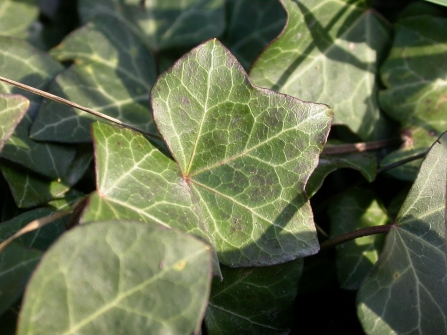
© Philip Precey
Ivy has had a long-standing association with winter celebrations throughout history, like holly, a splash of evergreen colour in a landscape that may appear otherwise lifeless.
Some mistake ivy for a parasitic plant - responsible for strangling the life from trees and tearing apart the fabric of buildings and walls. However, when a tree appears to be being taken over by ivy is often a symptom of something else happening within the tree, such as disease or rot. Where this happens, the ivy takes advantage of the situation, increasing its own canopy. Likewise, if the masonry is already weathered or soft through lack of maintenance, ivy can speed the deterioration of walls and can become to heavy for some wooden fences to support.
Ivy only uses its host for support. The fine aerial roots, which people often assume are taking nutrients from trees, are actually anchors and only penetrate the bark.
Ivy is a wonderful plant for wildlife. As we head into winter, the berries (which appear from November onwards) provide an important food source for birds such as redwings, robins, blackcaps, collared doves and many more species. Ivy also provides roosting sites for bats.
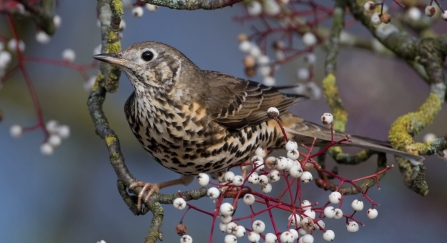
© Donald Sutherland

